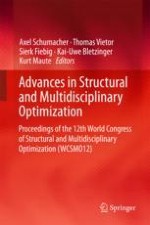2018 | OriginalPaper | Chapter
Efficient Optimal Surface Texture Design Using Linearization
Authors : Chendi Lin, Yong Hoon Lee, Jonathon K. Schuh, Randy H. Ewoldt, James T. Allison
Published in: Advances in Structural and Multidisciplinary Optimization
Publisher: Springer International Publishing
Activate our intelligent search to find suitable subject content or patents.
Select sections of text to find matching patents with Artificial Intelligence. powered by
Select sections of text to find additional relevant content using AI-assisted search. powered by
